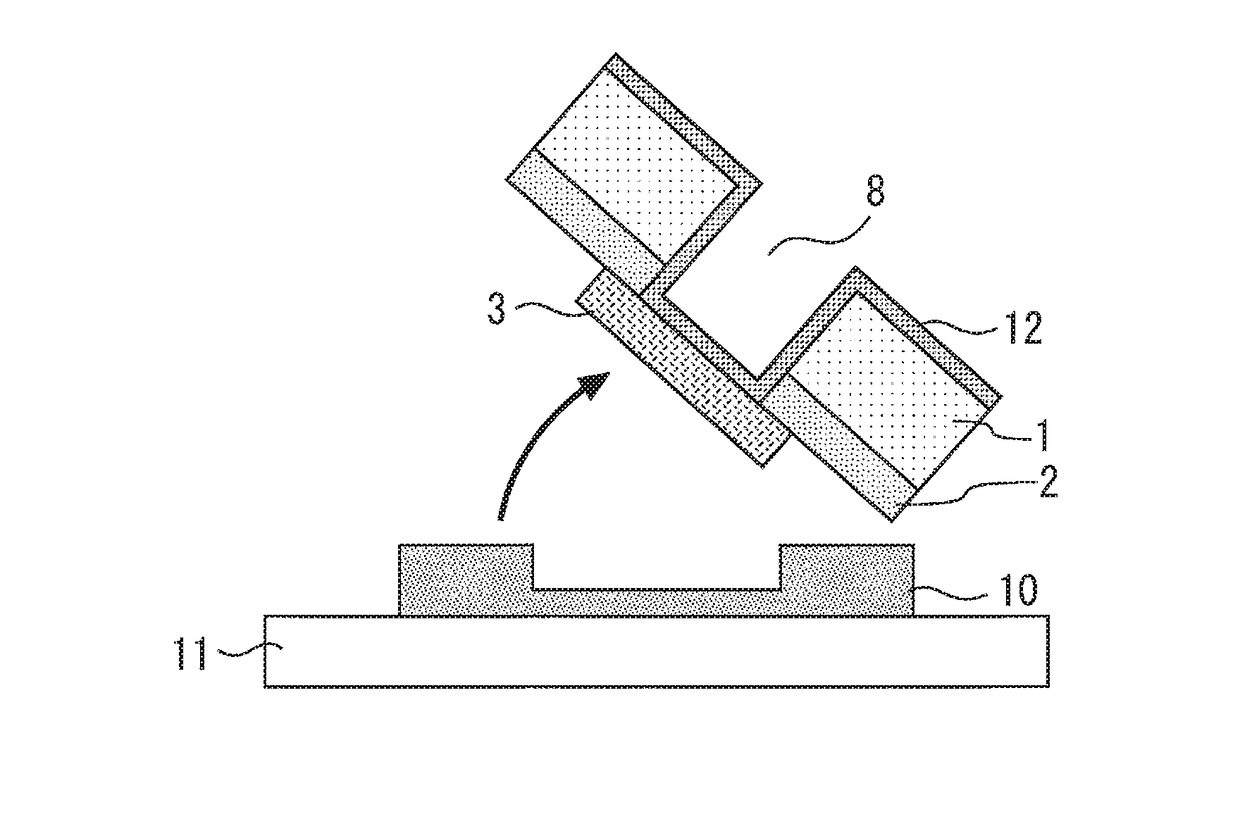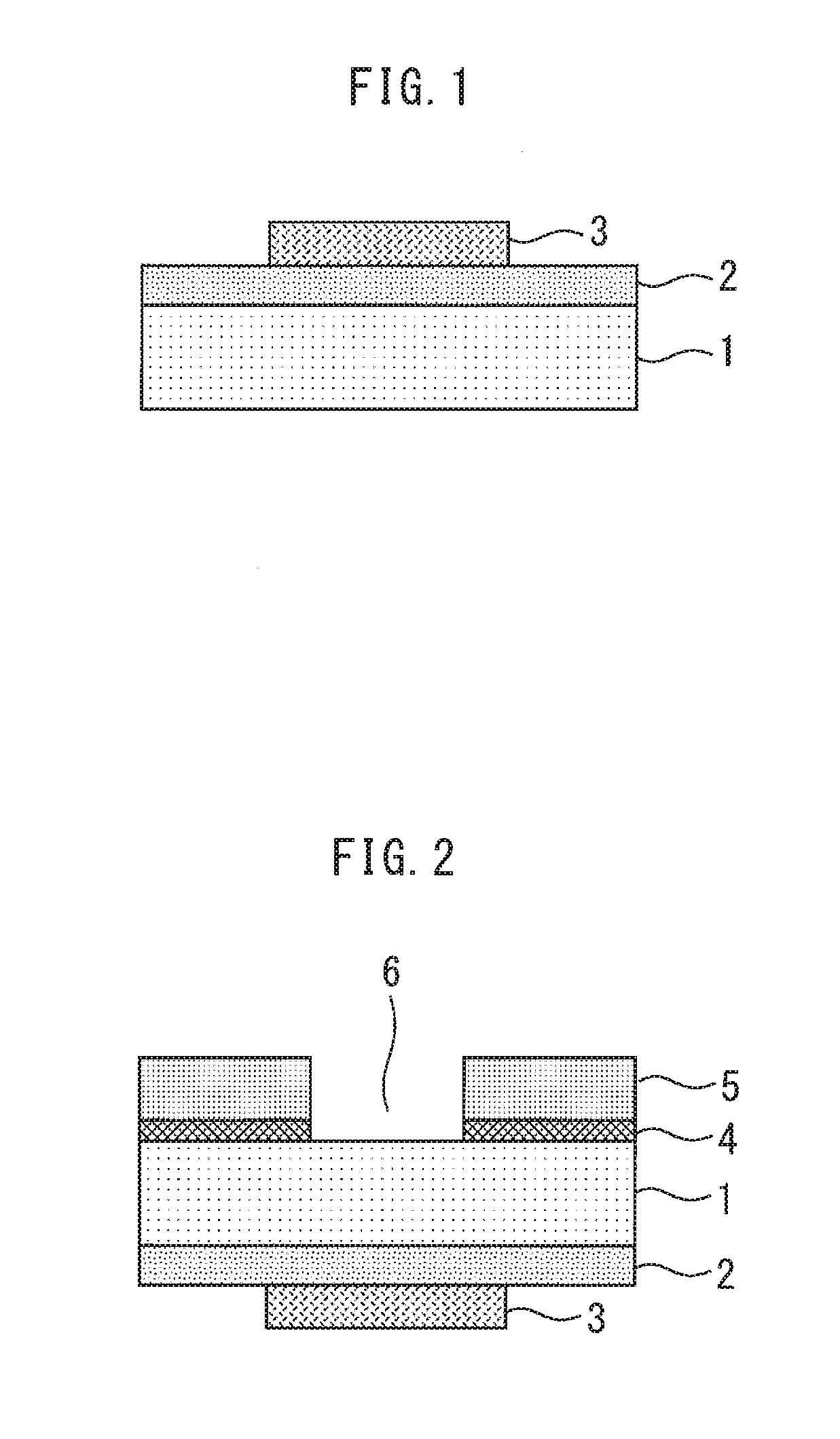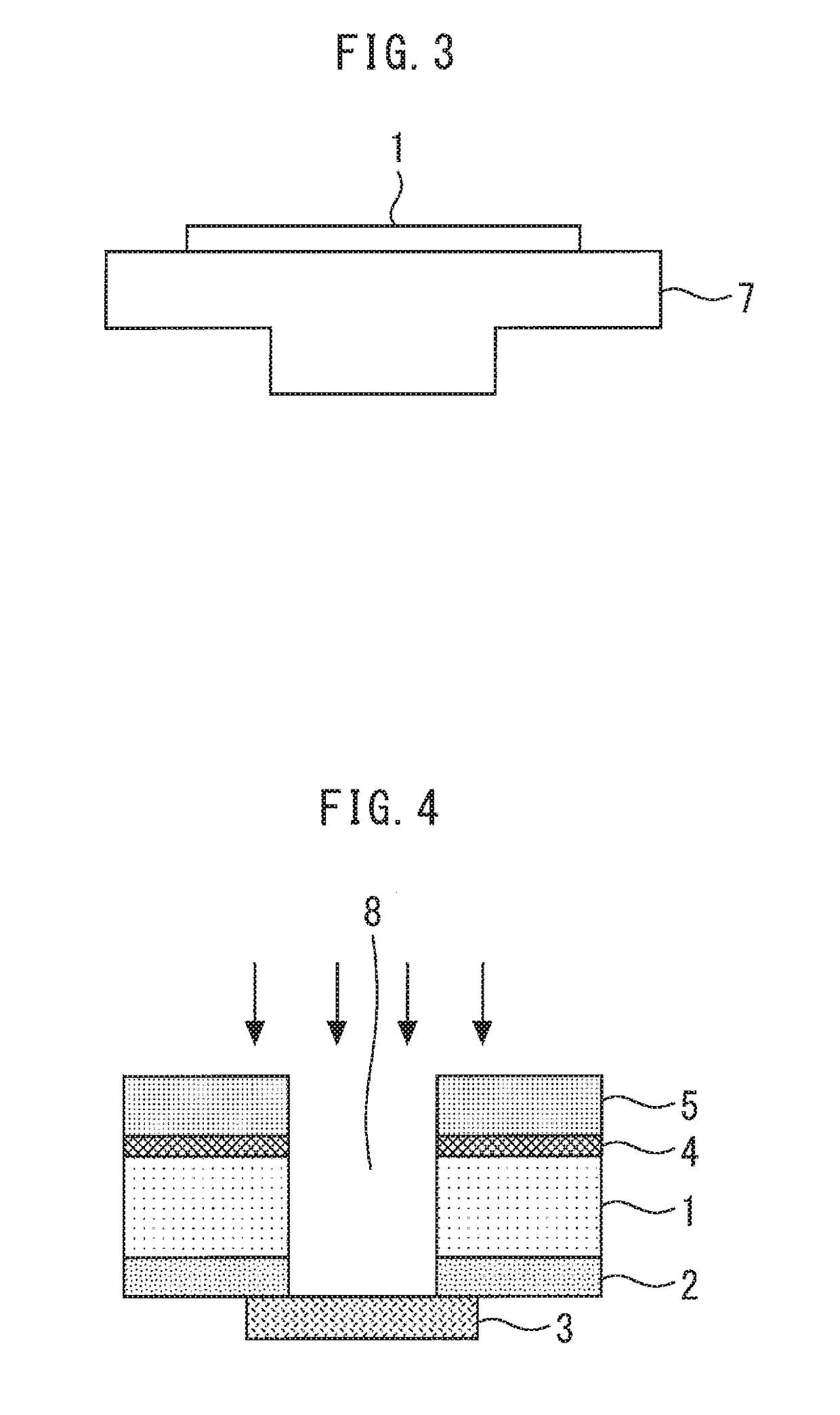Method of manufacturing semiconductor device
a manufacturing method and semiconductor technology, applied in the direction of semiconductor devices, basic electric elements, electrical appliances, etc., can solve the problems of increasing processing time, material requirements that cannot be met, and problem with low-temperature process, so as to prevent a reduction in yield, increase the frequency of maintenance, and increase the effect of productivity
- Summary
- Abstract
- Description
- Claims
- Application Information
AI Technical Summary
Benefits of technology
Problems solved by technology
Method used
Image
Examples
first embodiment
[0016]FIGS. 1 to 5 are sectional views showing a method of manufacturing a semiconductor device according to a first embodiment of the present invention. First, as shown in FIG. 1, a GaN-on-SiC substrate is formed by epitaxially growing a GaN epi-layer 2 on a front surface of an SiC substrate 1. A source electrode 3 is formed on the GaN epi-layer 2.
[0017]Subsequently, as shown in FIG. 2, a resist separation layer 4, which is not cured and soluble in a chemical solution even at a high temperature of 400° C., is applied to a back surface of the SiC substrate 1. The material of the resist separation layer 4 is, for example, Omnicoat, which is an aliphatic polyimide-based resist developed as the material of a sacrificial layer for a permanent resist.
[0018]Subsequently, a resist 5 having high dry resist resistance and capable of retaining a shape in a temperature range from 200° C. to about 400° C. and having a thickness (ordinarily 100 μm to 200 μm) equal to or larger than a work substr...
second embodiment
[0025]FIGS. 6 to 8 are sectional views showing a method of manufacturing a semiconductor device according to a second embodiment of the present invention. The present embodiment corresponds to a more practical mode of processing for forming a via hole in GaN-on-SiC by using a support substrate in the first embodiment.
[0026]As shown in FIG. 6, a substrate separation layer 9 is formed on the front surface side of the SiC substrate 1 on which the GaN epi-layer 2 and the source electrode 3 are formed. It is desirable to use, as the substrate separation layer 9, Omnicoat, which is an aliphatic polyimide-based resist, in order to protect the GaN epi-layer 2 and the source electrode 3 on the front surface side.
[0027]Subsequently, an adhesive 10 is applied on the substrate separation layer 9. The adhesive 10 is cured by hard baking at a temperature of 200° C. or higher, e.g., about 300° C., thereby bonding the SiC substrate Ito a support substrate 11. The adhesive 10 is a liquid material wh...
PUM
| Property | Measurement | Unit |
|---|---|---|
| temperature | aaaaa | aaaaa |
| temperature | aaaaa | aaaaa |
| temperature | aaaaa | aaaaa |
Abstract
Description
Claims
Application Information
 Login to View More
Login to View More - R&D
- Intellectual Property
- Life Sciences
- Materials
- Tech Scout
- Unparalleled Data Quality
- Higher Quality Content
- 60% Fewer Hallucinations
Browse by: Latest US Patents, China's latest patents, Technical Efficacy Thesaurus, Application Domain, Technology Topic, Popular Technical Reports.
© 2025 PatSnap. All rights reserved.Legal|Privacy policy|Modern Slavery Act Transparency Statement|Sitemap|About US| Contact US: help@patsnap.com



